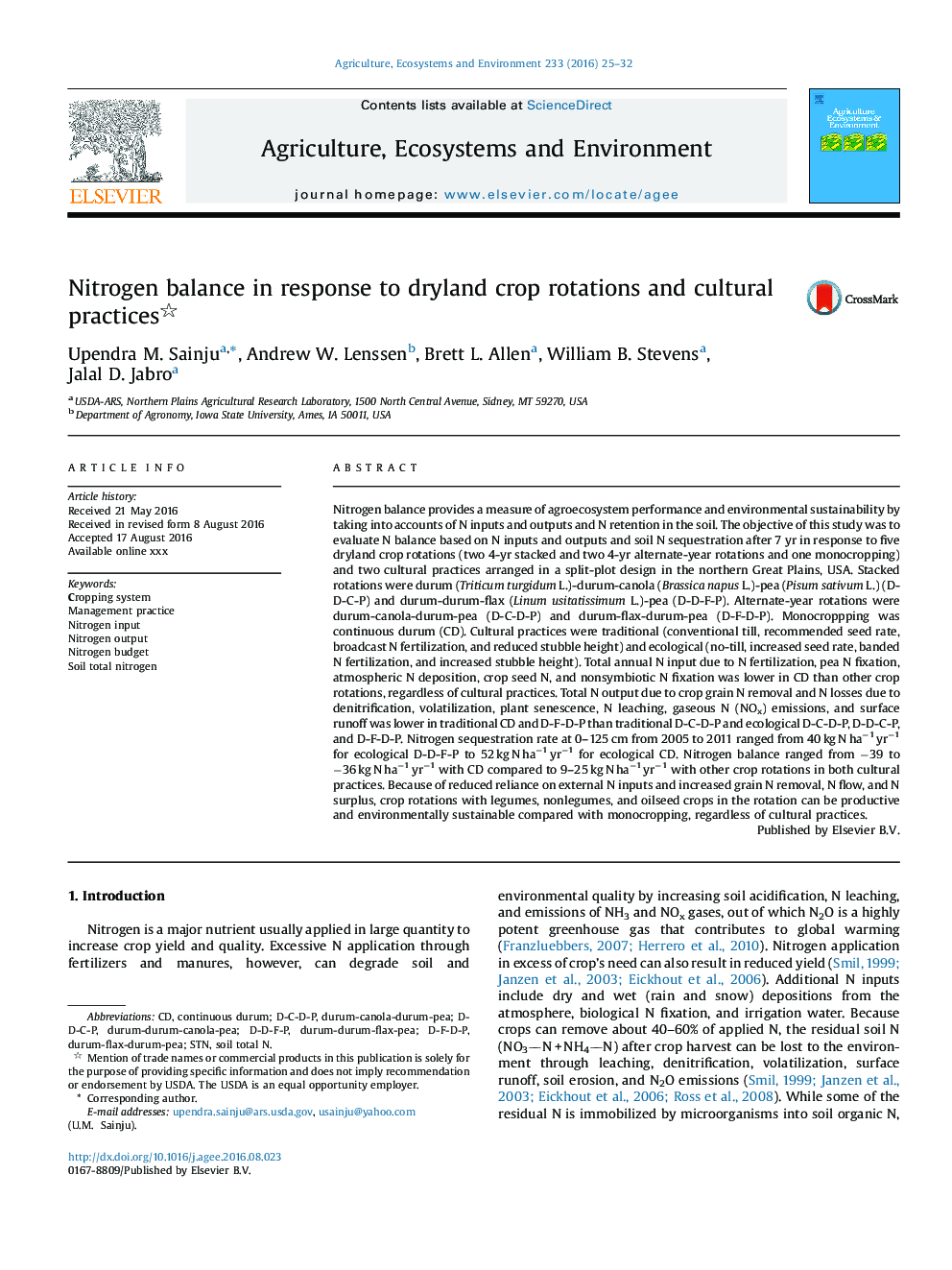| Article ID | Journal | Published Year | Pages | File Type |
|---|---|---|---|---|
| 2413465 | Agriculture, Ecosystems & Environment | 2016 | 8 Pages |
•Studies on N balance in dryland agroecosystems are scarce.•Seven-year effect of crop rotation and cultural practice on N balance was studied.•N inputs, outputs, and balance were greater with crop rotations than monocrop.•Cultural practice has little effect on N balance.•Crop rotations had higher N uptake with less environmental N loss than monocrop.
Nitrogen balance provides a measure of agroecosystem performance and environmental sustainability by taking into accounts of N inputs and outputs and N retention in the soil. The objective of this study was to evaluate N balance based on N inputs and outputs and soil N sequestration after 7 yr in response to five dryland crop rotations (two 4-yr stacked and two 4-yr alternate-year rotations and one monocropping) and two cultural practices arranged in a split-plot design in the northern Great Plains, USA. Stacked rotations were durum (Triticum turgidum L.)-durum-canola (Brassica napus L.)-pea (Pisum sativum L.) (D-D-C-P) and durum-durum-flax (Linum usitatissimum L.)-pea (D-D-F-P). Alternate-year rotations were durum-canola-durum-pea (D-C-D-P) and durum-flax-durum-pea (D-F-D-P). Monocroppping was continuous durum (CD). Cultural practices were traditional (conventional till, recommended seed rate, broadcast N fertilization, and reduced stubble height) and ecological (no-till, increased seed rate, banded N fertilization, and increased stubble height). Total annual N input due to N fertilization, pea N fixation, atmospheric N deposition, crop seed N, and nonsymbiotic N fixation was lower in CD than other crop rotations, regardless of cultural practices. Total N output due to crop grain N removal and N losses due to denitrification, volatilization, plant senescence, N leaching, gaseous N (NOx) emissions, and surface runoff was lower in traditional CD and D-F-D-P than traditional D-C-D-P and ecological D-C-D-P, D-D-C-P, and D-F-D-P. Nitrogen sequestration rate at 0–125 cm from 2005 to 2011 ranged from 40 kg N ha−1 yr−1 for ecological D-D-F-P to 52 kg N ha−1 yr−1 for ecological CD. Nitrogen balance ranged from −39 to −36 kg N ha−1 yr−1 with CD compared to 9–25 kg N ha−1 yr−1 with other crop rotations in both cultural practices. Because of reduced reliance on external N inputs and increased grain N removal, N flow, and N surplus, crop rotations with legumes, nonlegumes, and oilseed crops in the rotation can be productive and environmentally sustainable compared with monocropping, regardless of cultural practices.
